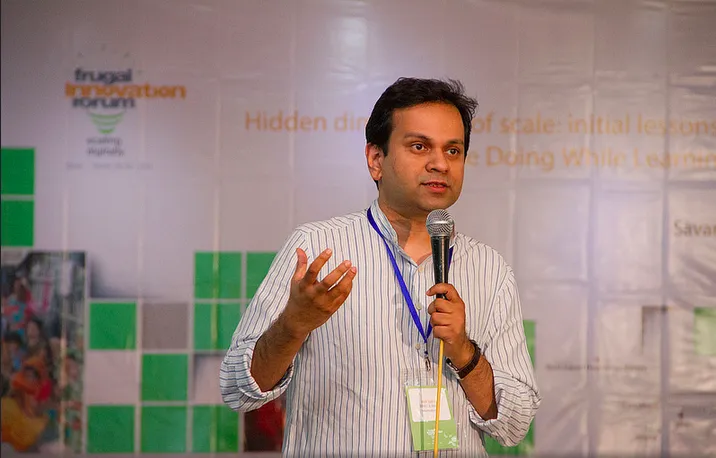How BRAC, the largest NGO in the world, works
“Can a NGO truly impact the world we live in? Can a NGO really change a nation?” Those questions have been asked by many analysts around the world who are trying to assess the impact of nonprofit.
Some may argue that NGOs are too small, that they are not entrepreneurial or that they are not professional enough. Well, after visiting BRAC, the largest NGO in the world, I saw a clear answer to the above questions. BRAC is based in Bangladesh and operates in 11 countries impacting the lives of 126 million people. But it is not just an NGO–BRAC includes 16 social enterprises which generate 70% of its revenues.
We spoke to Asif Saleh, Senior Director of Strategy, Communications and Capacity at BRAC and BRAC International, to know more about the organisation.
“BRAC is the largest organisation in the no profit sector because it actually operates in a holistic way. There are multiple issues that cause poverty so you have to attack poverty from all fronts in order to tackle it, that’s why BRAC started working in the microfinance sector in the early days, but soon moved into education, health, water and sanitation, and food security. There are a number of programmes and all of them operate on a very large scale. Besides that, BRAC has different social enterprises which work to give people access to markets, better prices, and better quality, and it has started to address the market failure too. It’s a combination of development programs, social enterprises and social investment. That’s why we also have a bank and a university. It’s a very unique organisation, but the end goal is to improve the lives of the poor. That’s how we use our tools.”
Asif’s story is pretty interesting. He moved to US and after his graduation in Computer Science, he moved again in the UK where he worked for 12 years as a technologist in multinational companies. Meanwhile, he started a charity organisation to give back to his country, Bangladesh. “I was working in Goldman Sachs, but during the nights, I was working for a development project in Bangladesh. We were just a bunch of people living outside Bangladesh, and I got them together and coordinated their efforts to contribute back to the country we left behind. That led me to visit Bangladesh often and helped in keeping me connected with my country. I understood that I enjoyed doing this very much. So I told myself that I had to choose because it was impossible to carry on like that. In 2009, I left my job in London and decided to come back to Bangladesh. I worked for two years as an advisor to the Prime Minister’s Office on how to use tech for social impact, and then I joined BRAC,” explains Asif.

The numbers tell an impressive story. “BRAC has 120,000 full-time staff in Bangladesh and in other countries. It implements programs in 11 countries, 5 in Africa, 6 in Asia and in USA and the UK where we raise funds. Ten years ago, we realised that the model that worked in Bangladesh can be replicated outside. We started a microfinance program in Pakistan and then we replicated it in other countries. Our goal is to have the same transformational impact we have had in Bangladesh and for that the engagement needs to be much deeper. Right now, 126 million people are getting services from BRAC. A lot of them are getting services through microfinance. We have the largest school system in the world running 37,000 schools in Bangladesh only. The idea behind it is that poverty is inter-generational, so if my father is poor the best way to tackle it is through education and giving a chance to everyone. Our approach is community driven, we focus on capacity building in the community through various training program and we integrate them in a system where they can realise their potential, be inspired, make a living for themselves and improve their condition,” states Asif.This organisation is not another big charity, but a no-profit organisation which works with a hybrid model between social enterprises and NGO activities “We have 16 social enterprises in BRAC, which started as a way to give people access to better market, better prices and development. Overtime, it became quite profitable since we operate on a large scale. One of our biggest social enterprises is a retail store in urban areas where we sell handicrafts from rural artisans. That’s a very popular brand and over 60,000 artisans are linked to it. We have another social enterprise which is the second largest milk producer company that gives access to better markets. It also started at the village level where we were providing microfinance services. The villagers were mainly buying cows, but they did not have a ready market to sell the milk, so we decided to provide them a supply chain in the urban market. Initially, we had to subsidise but later we were able to become profitable,” says Asif proudly.
Explaining BRAC in just a sentence, he says, “BRAC is about helping people realise their potential. A lot of people don’t have access to a lot of resources so we help them with this access.”
This article is part of a series of interviews that were taken at the 2014 BRAC Frugal Innovation Forum: Scaling Digitally. Please visit here to find other article in the series.







